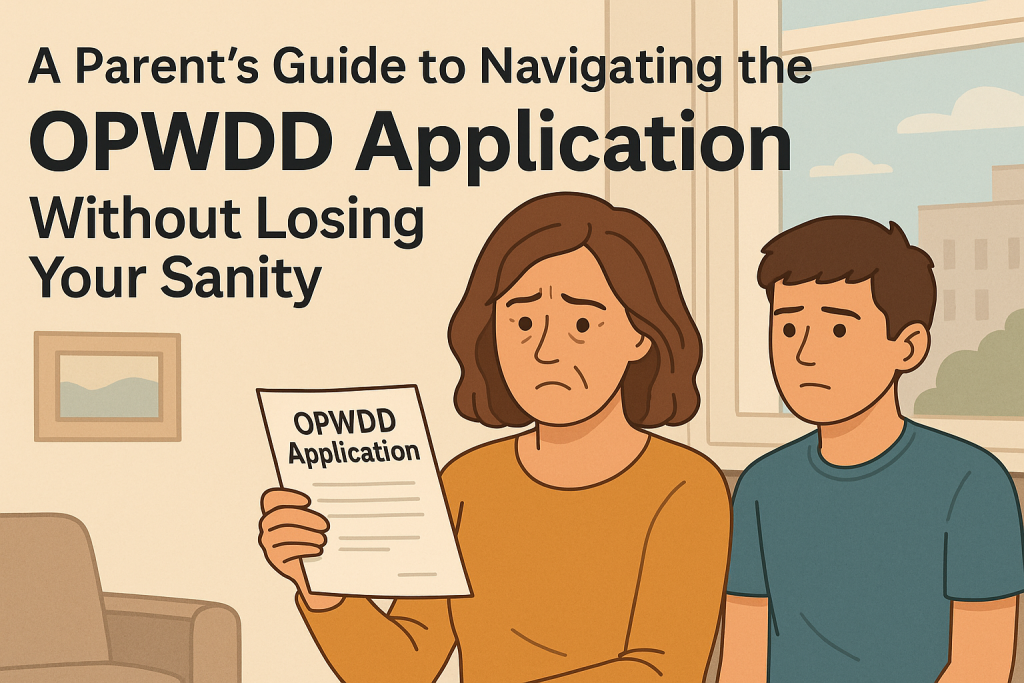If you’re a parent in New York trying to apply for services through the Office for People With Developmental Disabilities (OPWDD), you probably already know the process can feel like another full-time job. Between paperwork, eligibility assessments, and waiting periods, families often feel overwhelmed. The truth is, you’re not alone — thousands of NYC families face the same maze of forms and rules every year. This guide will walk you through the OPWDD application process, highlight where parents get stuck, and give you strategies to stay calm and in control while also pointing to trusted resources like SecureSafer Insurance Agency when benefits and coverage questions arise.
Table of Content
1.Step One: Understanding OPWDD and What It Offers
2.Step Two: Gathering Documentation Without the Panic
3.Step Three: The Front Door Meeting — What to Expect
4.Step Four: Managing the Waiting Game
5.Step Five: Service Planning and Care Coordination
6. Where Parents Get Stuck — and How to Avoid It
7.Finding Peace of Mind in a Complex System
Step One: Understanding OPWDD and What It Offers
OPWDD is New York State’s main pathway for people with developmental disabilities to receive long-term support services. These services may include housing, employment support, respite, and care coordination. According to health.ny.gov, OPWDD eligibility requires evidence of a developmental disability diagnosed before age 22, such as autism, intellectual disability, or cerebral palsy.
For parents, the most important takeaway is this: OPWDD services are not automatic. You must apply, provide proof, and wait for approval. Knowing this up front helps set realistic expectations and avoids frustration later.
Step Two: Gathering Documentation Without the Panic
One of the biggest stressors parents report is the sheer amount of documentation required. You’ll need medical evaluations, psychological assessments, and school reports. This is where parents often lose momentum. The trick? Create a dedicated binder or digital folder. Label each section clearly: “Medical,” “School,” “Assessments.” When OPWDD asks for an item, you’ll already have it at your fingertips.
This preparation also reduces back-and-forth delays. Missing documents are the top reason applications get stuck.
Step Three: The Front Door Meeting — What to Expect
Every family must go through what OPWDD calls “The Front Door.” It’s the intake process where you meet with a coordinator who reviews eligibility and explains services. Think of it as the doorway into the system.
Parents often feel intimidated by this meeting. But remember: it’s designed to help. Take notes, ask questions, and don’t hesitate to clarify terms you don’t understand. According to dfs.ny.gov, state law requires agencies to explain benefits and eligibility clearly. Use that right.
Step Four: Managing the Waiting Game
After submission, there’s usually a waiting period for eligibility review. This can stretch weeks or even months. During this time, parents often feel powerless. But you can use the waiting period productively:
- Double-check your documentation.
- Connect with parent support groups in NYC.
- Explore interim services, such as community resources listed at medicare.gov.
Patience is part of the process, but preparation keeps stress from spiraling.
Step Five: Service Planning and Care Coordination
If eligibility is approved, you’ll move on to service planning. Here, a care manager helps design a plan that meets your child’s needs. Housing, respite, employment support, and community programs may all be part of the package.
This is also when questions about insurance often come up. How do OPWDD services overlap with Medicaid, Medicare, or private insurance? SecureSafer Insurance Agency specializes in helping NYC families understand these intersections. Having an expert walk you through coverage means fewer surprises and less worry about denied claims.
Where Parents Get Stuck — and How to Avoid It
Through years of helping families, three common sticking points keep showing up:
- Confusion around eligibility. Many parents assume a diagnosis equals automatic approval. It doesn’t. Evidence must be carefully documented.
- Paperwork overload. Without a system, papers get lost, deadlines missed, and applications delayed.
- Insurance overlaps. Families often don’t realize OPWDD services don’t replace Medicaid or Medicare. They work together — but navigating that requires expertise.
Each of these roadblocks can be eased by preparation, persistence, and professional support.
Finding Peace of Mind in a Complex System
Parents deserve more than just instructions — they deserve peace of mind. OPWDD is a lifeline, but the application process can drain emotional energy. Lean on resources:
- NYC parent advocacy groups.
- Local clinics familiar with OPWDD paperwork.
- Insurance agencies like SecureSafer that can bridge the gap between state services and private coverage.
You don’t have to carry the burden alone.
Compliance Note
This article is for educational purposes only and does not guarantee eligibility, approval, or benefits. For official information, please visit medicare.gov, dfs.ny.gov, or health.ny.gov.
The OPWDD application may test your patience, but it is also the path to critical support for your child. By staying organized, asking questions, and leaning on trusted partners, you can move through the process with more confidence and less stress.
| Need Help Now? Don’t Wait. ✅ Call our SecureSafer team directly at SecureSafer.com or call (646) 444-2020 ✅ Request a policy review or switch evaluation today. |
ADVERTISEMENT

